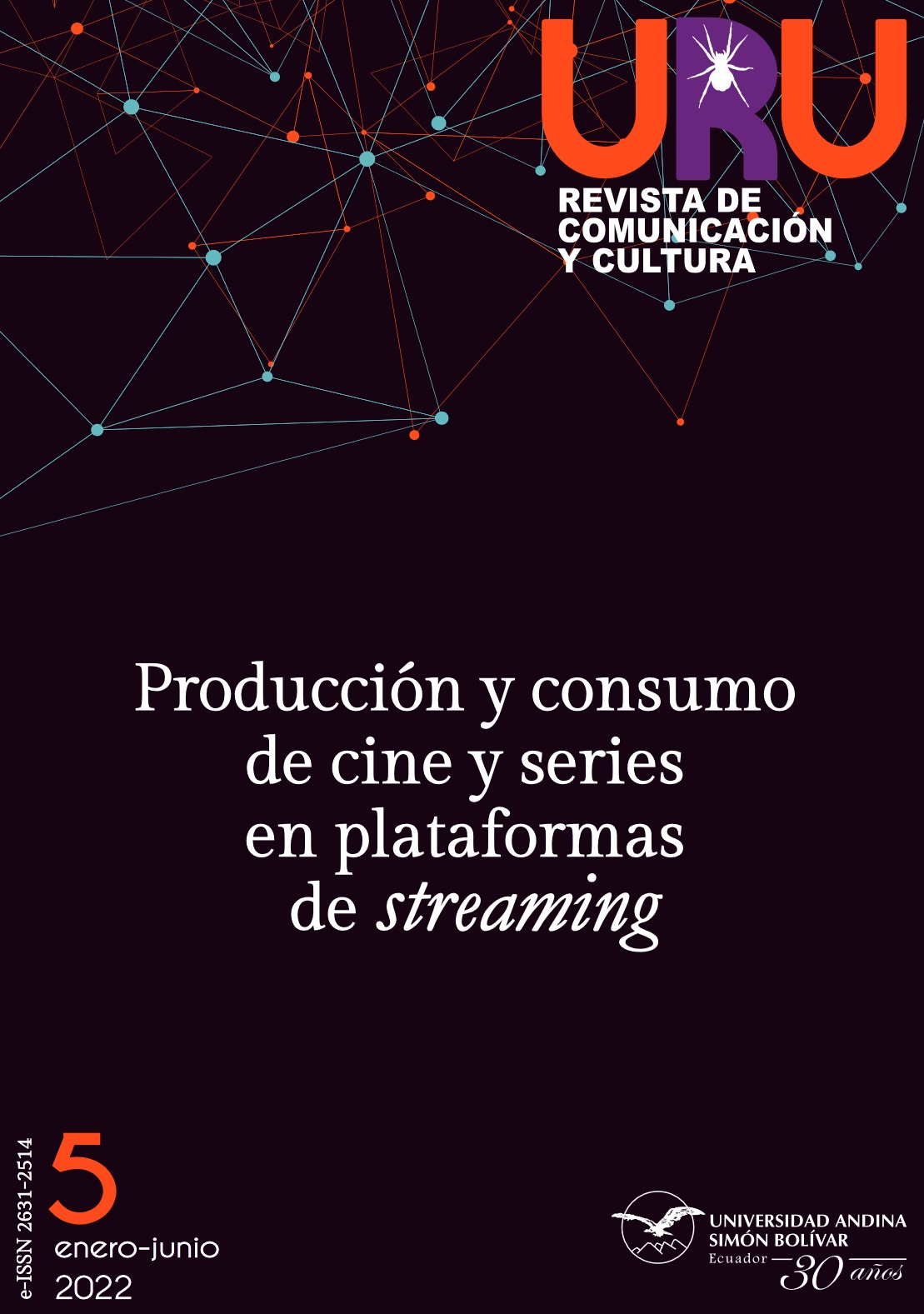The Aura in Cinema Streaming
DOI:
https://doi.org/10.32719/26312514.2022.5.6Keywords:
Streaming, viewer, cinema, time, spaceAbstract
The arrival of streaming platforms marked a turning point in cinema consumption mechanisms because of the flexibility of the time-space factor. It becomes customary. However, this relationship has also been deformed as the publics conscience relocated itself. Therefore, it is likely that this new system is organic to creative processes and their reception by viewers mediated by technological devices. The present work aims to locate the new place that time and space occupy in the relationship between cinema and its audience and the presence of the aura in this transaction. To do this, a brief review of the subject-spectator will be made in the face of cinematographic practices and the codes that allow, or not, to overcome the limits of the here and now suggested by Walter Benjamin in his text “The work of art in the time of mechanical reproduction”.
Downloads
References
Bauman, Zygmunt. 2021. “Comprar o no comprar ya no es el dilema”. Bloghemia. 6 de julio.
Benjamin, W. 1989. Discursos interrumpidos I. Buenos Aires: Taurus.
Borges, Jorge Luis. 1949. El Aleph. Buenos Aires: Losada.
Bourdieu, Pierre. 1996. Sobre la televisión. Barcelona: Anagrama.
Brody, Richard. 2021. “Paul Schrader on Making and Watching Movies in the Age of Netflix”. The New Yorker. 22 de abril.
Deleuze, Gilles. 1986. La imagen tiempo: Estudios sobre cine 2. Barcelona: Paidós.
Deutsche Welle. 2021. “¿Vida eterna gracias al alma digital?”. Deutsche Welle. 29 de septiembre.
Heidegger, Martin. 2012. El arte y el espacio. Barcelona: Herder. DOI: https://doi.org/10.2307/j.ctvt9k239
Herzog, Werner. 2019. Family Romance, LLC. Estados Unidos: Skellig Rock.
Lévi-Strauss, Claude. 1978. Antropología estructural. Barcelona: Paido?s.
Marcos, Natalia. 2020. “Anatomía de una pérdida de tiempo: Así han aumentado los minutos que pasamos decidiendo qué ver”. El País. 1 de marzo.
Millán, Víctor. 2020. “Elena Neira: ‘Las Streaming Wars son fundamentalmente una guerra por los datos’”. Hipertextual. 20 de junio.
Neira, Elena. 2020. Streaming Wars: La nueva televisión. Barcelona: Libros Cúpula.
Norman, Jeremy. 2022. “George Owen Squier invents Muzak”. History of Information. Accedido 17 de abril.
Páucar, Gabriel. 2018. “El cine clásico y de autor en plataformas de streaming”. Ventana Indiscreta 20:
-61. http://dx.doi.org/10.26439/vent.indiscreta2018.n020.2688. DOI: https://doi.org/10.26439/vent.indiscreta2018.n020.2688
Scorsese, Martin. 2019. “A qué me refiero con que las películas de Marvel no son cine”. New York Times. 11 de noviembre.
Sussoni, Nicole. 2020. “La importancia del diseño sonoro cinematográfico: Una comparativa entre el cine y el streaming”. Tesis de grado, Universidad Peruana de Ciencias Aplicadas.
Tomalá, Catheryn. 2020. “Las narrativas interactivas: Del cine a las plataformas streaming, el caso Netflix”. Tesis de licenciatura, Universidad de las Artes, Ecuador.
Wikipedia. 2022. “Netflix”. Wikipedia. Accedido 15 de abril.
Downloads
Published
How to Cite
Issue
Section
License
LicenseASSIGNMENT OF RIGHTS, DECLARATION OF CONFLICT OF INTEREST AND DISSEMINATION
The authors who publish in this journal accept the following conditions:
- Authors retain copyright and grant the journal the right of first publication, with the work registered under the Creative Commons Attribution-NonCommercial-ShareAlike 4.0 License, which allows sharing, adapting and attributing the work (see: Open Access Policies).
- Authors can make other independent and additional contractual agreements for the distribution of the article published in this journal (e.g., include it in an institutional repository or publish it in a book) as long as they expressly indicate that the article was published for the first time in Uru: Revista de Comunicación y Cultura. In the case of reproduction, a note similar to the following must be included: This text was originally published in the journal Uru: Revista de Comunicación y Cultura N ° -, year of publication.
- Authors are encouraged to publish their work on the Internet (e.g. on institutional or personal pages) in the final version published by Uru: Revista de Comunicaicón y Cultura as it may lead to a wider and faster dissemination of the published work.









